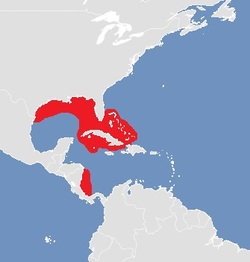
Common Name
Bigeye Sixgill Shark
Year Described
Teng, 1962
Identification
A slender shark with a blunt snout and a narrow head and mouth. Dorsal fin is small and placed far back on the body anterior to the anal fin base. Distance from dorsal fin to caudal fin base much greater than the length of the dorsal fin. Anal fin is smaller than the dorsal fin. The pelvic fins are low and have a very long base. Caudal fin is large with a well developed ventral lobe and sub-terminal notch. There are six long gill slits; the last ends anterior to the pectoral fin origin. The mouth extends past the posterior margin of the eye. The upper jaw has small yet sharp teeth and the lower jaw contains long, comb-shaped teeth in five rows. The eyes are relatively large.
Color
The upper half of the body is dark to light brownish-gray with the belly distinctly lighter. The fins are dusky with lighter trailing edges. Eyes are fluorescent green in life. Juveniles have a black tipped caudal fin.
Size
Mature adults from 120-142 cm. Maximum size to 180 cm. Males mature at a smaller size than females.
Habitat
Found offshore over continental shelves and slopes as well as island slopes from 90-621 m. It is a benthic species that feeds on bony fishes and crustaceans. Ovovivparous (13-26 young).
Range Map

Range
Widely scattered in the Caribbean Sea from Southern Florida to Cuba, the Bahamas, E. Nicaragua, Jamaica, and Northern South America (Venezuela, Guyanas). Also the S. Gulf of Mexico.
References
Castro, J.I. 2011. The Sharks of North America. Oxford University Press, 640 pp.
Compagno, L., M. Dando, and S. Fowler. 2005. Sharks of the World. Princeton University Press, 480 pp.
Other Notes
Hexanchus nakamurai is restricted to the Indo-Pacific.